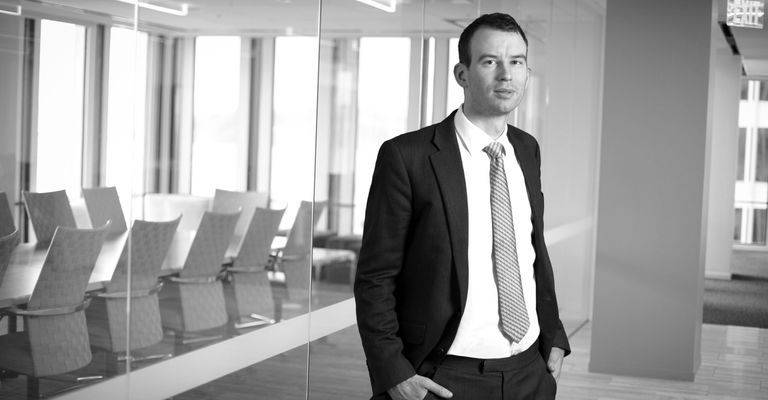Insights
CATO - Better Late than never?
Mar 29, 2016Summary
As part of the government’s wider review of the electricity transmission network (the Integrated Transmission Planning and Regulation (ITPR) project), and after its introduction of competition to offshore transmission assets and their owners (OFTOs), Ofgem has consulted on introducing competitive tenders for the design, build and operation of onshore transmission assets, thereby creating Competitively Appointed Transmission Owners (CATOs).
In this, the second article of our introductory series on CATOs, (now that's what I call CATO: Volume 1) we discuss the difference between the two development models proposed by Ofgem in its consultation – namely ‘early’ and ‘late’. Our analysis below highlights that the key distinguishing features of the two models stem from the point in a project’s development process at which the tender takes place.
Late Development Model
Under the late development model, the tender process can be expected to occur four to five years prior to asset commissioning. With late development model tenders, it is envisaged that there will be a high degree of certainty as to what is required in terms of transmission assets. Tenders would be on a fixed-price basis (with limited opportunity to re-open categories of costs – i.e. only where it is not possible to efficiently price an aspect of cost at the point of tender).
In the late development model the system operator (SO) (National Grid in England & Wales, SP Transmission in southern Scotland and Scottish Hydro Electric Transmission in northern Scotland) will have a larger role than under the early development framework - including the initial identification of projects, surveying, studies and consent application preparation and submission. The successful tender party will then be expected to engage with the examination of the consent application and procure, construct, finance and operate the project.
This development model is broadly similar to the OFTO regime and, as such, a more familiar and better understood project structure with fewer risk categories to be priced (and less uncertainty about the pricing of that risk). As such it is anticipated that late development model projects will have a wider uptake amongst tenderers interested in the new market.
The SO and Ofgem
SOs already (pre-CATO) have a significant role in project identification through their system planning activities. For example, National Grid undertakes the Electricity Ten Year Statement (ETYS), Future Energy Scenarios (FES) and System Operability Framework (SOF).
Presently under strategic wider works projects (SWWs – large investment projects that are not part of the price control settlement funding) selected for tender during RIIO – T1 (until March 2021), the transmission operator (TO) takes on much of the increased SO role (in assuming responsibility for many of the preliminary studies and surveys). Notwithstanding the SO’s need to redeploy its industry expertise to undertake this increased role, should the SO tender for the project itself, separate parts of its business will be used to undertake its role as SO and as tender participant.
To prevent undue uncertainty around the future workings and shape of the transmission system, Ofgem favours the late model for SWWs. It is envisaged that the TO will continue to undertake its role in the preliminary development of projects and would be paid for any additional works necessary for the projects tendering.
Early Development Model
Under the early development model the tender process can be expected to occur seven to nine years prior to asset commissioning. The successful tender party takes responsibility for preliminary works (e.g. initial solution design, undertaking surveys and studies and consent, such as environmental impact assessments and planning consents). These further, potentially more uncertain and unfamiliar, risks (such as archaeological finds and site contamination) will need to be priced into tenders. The SO has a more stripped-back role in this model – setting the parameters of projects to be tendered.
Tenders will be on a indicative cost basis. Preliminary costs will be fixed and Ofgem has suggested indicative costing for construction onwards on the basis of fixed equity return, indicative gearing and indicative cost of debt.
Whilst there is potentially greater scope for innovation in the early development model (thereby delivering better value to consumers), this model will involve higher due diligence costs, will be technically more complicated and will likely have a less familiar structure. Potential tender participants may not have an appetite for this extra risk (including higher bid costs) and there may be a smaller number of tenders.
Looking Ahead
We expect that the number and nature of tender participants will vary based on the development model adopted for each particular project, with companies with significant experience in funding and constructing complex infrastructure projects potentially taking a greater interest in early development model projects as a result of them being comfortable with, and having strategies for addressing and mitigating costs for, the broader range of risks involved.
How tender participants develop approaches to financing for early development model projects will also be a key issue to keep under consideration going forward. With the consultation suggesting that early development model tenders will be costed on the basis of fixed equity return, but with indicative gearing and cost of debt, there is both the potential that: (i) indicative gearing requirements will lead to artificially low gearing for relatively low-risk projects, and (ii) indicative gearing requirements combined with a fixed equity return will lead to a situation where the overriding factor determining success of a tender participant is a low cost of debt. Whether this unduly restricts competition or affects the technical quality of projects remains to be seen.
Related Capabilities
-
Power
-
Renewables & Storage




